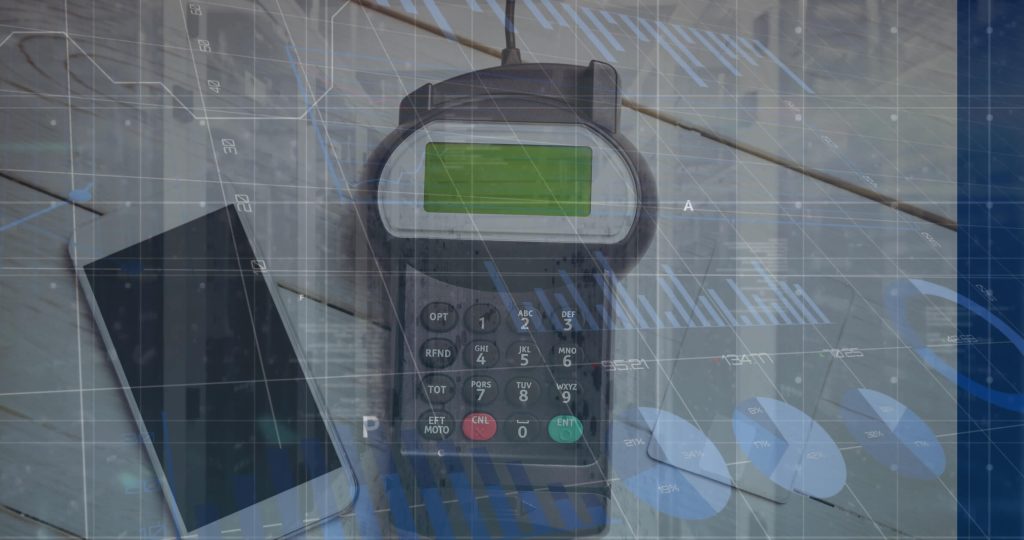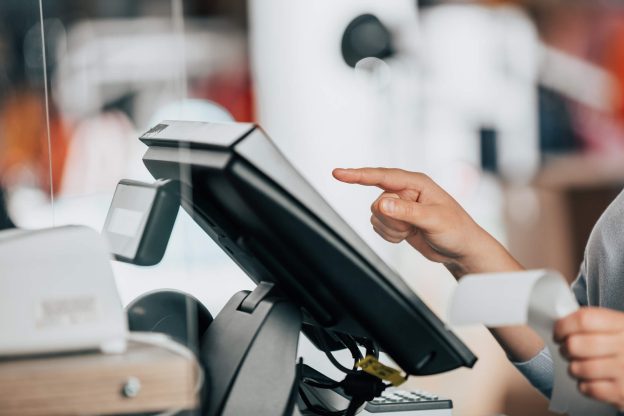In today’s fast-paced business environment, having a user-friendly and efficient Point of Sale (POS) system is crucial for success. User Experience (UX) design plays a vital role in creating interfaces that are intuitive, visually appealing, and tailored to the specific needs of businesses. This comprehensive guide will delve into the world of UX design in POS systems, covering topics such as the importance of user-friendly interfaces, customization options for various business needs, designing for accessibility and inclusivity, usability testing and user research, best practices for visual design, integrating UX design with backend functionality, and the future of UX design in POS systems.
What is User Experience Design?

User Experience Design, commonly referred to as UX design, is the process of enhancing user satisfaction by improving the usability, accessibility, and overall experience of a product or system. It involves understanding users’ needs, goals, and behaviors and designing interfaces that meet those requirements effectively. In the context of POS systems, UX design focuses on creating interfaces that are easy to navigate, visually appealing, and efficient in performing tasks.
Understanding the Significance of POS Systems in Business Operations
POS systems are an integral part of modern business operations, particularly in the retail and hospitality industries. They facilitate the processing of transactions, inventory management, sales reporting, and customer relationship management. A well-designed POS system can streamline operations, improve efficiency, and enhance the overall customer experience. Therefore, investing in UX design for POS systems is essential for businesses to stay competitive in today’s market.
The Importance of User-Friendly Interfaces in POS Systems

User-friendly interfaces in Point of Sale (POS) systems are crucial for the efficient operation of businesses across various industries. These interfaces not only streamline transaction processes but also enhance the user experience for both staff and customers. Here’s a closer look at why user-friendly interfaces in POS systems are crucial and how they benefit both businesses and customers.
Enhancing Efficiency and Productivity
One of the primary benefits of a user-friendly interface in a POS system is improved efficiency and productivity. A well-designed interface allows users to quickly and easily perform tasks, such as processing transactions, searching for products, and generating reports. This saves time and reduces the likelihood of errors, ultimately leading to increased productivity and smoother operations.
Minimizing User Errors and Training Time
A user-friendly interface minimizes the chances of user errors, which can be costly for businesses. By incorporating clear and intuitive design elements, such as easily recognizable icons and logical workflows, users are less likely to make mistakes. Additionally, a well-designed interface reduces the learning curve for new employees, resulting in shorter training times and faster onboarding processes.
Improving Customer Satisfaction and Loyalty
A positive user experience in a POS system directly impacts customer satisfaction and loyalty. A user-friendly interface allows employees to serve customers efficiently, reducing waiting times and ensuring accurate transactions. This leads to happier customers who are more likely to return and recommend the business to others. In fact, according to a study by Forrester Research, a one-second delay in POS system response time can result in a 7% decrease in customer satisfaction.
Key Elements of a User-Friendly Interface in POS Systems
In the realm of retail and hospitality, the Point of Sale (POS) system stands as a critical tool, bridging the gap between service efficiency and customer satisfaction. The design of a POS system’s user interface (UI) significantly affects its usability and efficiency. A well-designed UI can streamline operations, reduce errors, and enhance the overall customer experience. Here are the essential elements that define a user-friendly interface in POS systems.
Intuitive Navigation and Layout
An intuitive navigation and layout are crucial for a user-friendly interface in a POS system. Users should be able to easily find the functions they need without having to search through complex menus or multiple screens. The interface should follow logical workflows and provide clear visual cues to guide users through the system.
Clear and Concise Visual Feedback
Visual feedback is essential in a POS system to provide users with confirmation that their actions have been successfully executed. This can be achieved through visual indicators, such as color changes or animations, that inform users about the status of their transactions or tasks. Clear and concise feedback helps users feel confident in their actions and reduces the likelihood of errors.
Streamlined Workflows and Task Flows
A user-friendly interface in a POS system should have streamlined workflows and task flows that minimize the number of steps required to complete common tasks. Reducing the number of clicks or taps needed to perform actions not only saves time but also reduces the cognitive load on users. By simplifying processes, businesses can improve efficiency and enhance the overall user experience.
Customization Options for Various Business Needs in POS Systems
This is especially true for Point of Sale (POS) systems, which are at the heart of business operations for retailers, restaurateurs, and service providers alike. Customization in POS systems is crucial, allowing businesses to tailor features and functionalities to their specific operational requirements and customer needs. Here’s a detailed exploration of how POS systems can be customized for various business needs.
Tailoring the Interface to Specific Industries
POS systems serve a wide range of industries, each with its unique requirements. Therefore, customization options are essential to cater to the specific needs of different industries. For example, a restaurant POS system may require features such as table management and kitchen order routing, while a retail POS system may focus on inventory management and customer loyalty programs. By offering customization options, businesses can ensure that their POS system meets their industry-specific needs.
Adapting to Different Business Sizes and Models
POS systems should be adaptable to different business sizes and models. Small businesses may require a basic POS system with limited features, while larger enterprises may need more advanced functionalities and integrations with other systems. Customization options allow businesses to scale their POS system as their needs evolve and grow.
Incorporating Branding and Personalization
Branding and personalization are important aspects of a business’s identity. Customization options in a POS system enable businesses to incorporate their branding elements, such as logos and color schemes, into the interface. This creates a cohesive and consistent brand experience for both employees and customers, reinforcing brand recognition and loyalty.
Designing for Accessibility and Inclusivity in POS Systems
Accessibility and inclusivity are critical factors in the design of Point of Sale (POS) systems. These systems are used by a wide variety of individuals, including people with disabilities, the elderly, and those who are not tech-savvy. Ensuring that everyone can use a POS system comfortably and efficiently is not just a matter of compliance with accessibility standards, but also a reflection of a business’s commitment to serving all customers. Here’s how designers and developers can create POS systems that are both accessible and inclusive.
Ensuring Compliance with Accessibility Standards
Designing for accessibility is crucial to ensure that POS systems are usable by individuals with disabilities. Accessibility standards, such as the Web Content Accessibility Guidelines (WCAG), provide guidelines for creating interfaces that are accessible to people with visual, hearing, motor, or cognitive impairments. By adhering to these standards, businesses can ensure that their POS systems are inclusive and accessible to all users.
Catering to Users with Disabilities or Special Needs
POS systems should consider the needs of users with disabilities or special needs. For example, providing options for larger font sizes or text-to-speech functionality can assist users with visual impairments. Similarly, incorporating alternative input methods, such as voice commands or touch gestures, can benefit users with motor impairments. By catering to these specific needs, businesses can create a more inclusive and user-friendly POS experience.
Considering Multilingual and Multicultural Users
In today’s globalized world, businesses often serve customers from diverse cultural and linguistic backgrounds. POS systems should consider the needs of multilingual users by providing language options and ensuring that translations are accurate and culturally appropriate. Additionally, considering cultural differences in design elements, such as color symbolism or iconography, can help create a more inclusive and culturally sensitive interface.
Usability Testing and User Research in POS System Design
In the fast-paced world of retail and hospitality, the efficiency of a Point of Sale (POS) system can significantly impact both customer satisfaction and business operations. Usability testing and user research are critical components in designing POS systems that are not only functional but also user-friendly. These processes help ensure that the POS interface meets the needs of its users—be they customers, sales associates, or business managers. Here’s an in-depth look at how usability testing and user research play pivotal roles in POS system design.
Conducting User Interviews and Surveys
User interviews and surveys are valuable tools in understanding users’ needs, preferences, and pain points. By conducting interviews or surveys with potential users, businesses can gather insights that inform the design of their POS system. Questions can focus on topics such as ease of use, desired features, and overall satisfaction with existing POS systems. This user research helps businesses make informed design decisions that align with user expectations.
Observing User Behavior and Gathering Feedback
Observing user behavior in real-world scenarios can provide valuable insights into how users interact with a POS system. Businesses can conduct usability tests where users perform specific tasks while their actions and feedback are recorded. This allows designers to identify areas of improvement and make iterative design changes based on user feedback. Additionally, gathering feedback from users through feedback forms or user testing sessions can provide valuable insights for further refinement of the POS system.
Iterative Design and Continuous Improvement
UX design is an iterative process that involves continuous improvement based on user feedback and testing. Designers should embrace an iterative approach, making incremental changes to the POS system based on user insights. By continuously refining the design, businesses can ensure that their POS system remains user-friendly and aligned with evolving user needs.
Best Practices for Visual Design in POS Systems
In the realm of Point of Sale (POS) systems, visual design plays a critical role in ensuring usability and efficiency. A well-designed interface can drastically reduce the time it takes for staff to complete transactions and can help minimize errors, leading to a smoother operation and improved customer experiences. Here are some best practices for visual design in POS systems that can help developers create more effective and user-friendly interfaces.
Choosing Appropriate Color Schemes and Typography
Color schemes and typography play a significant role in the visual design of a POS system. Colors should be chosen carefully to ensure readability and accessibility. High contrast between text and background is essential for users with visual impairments. Similarly, typography should be legible and easy to read, even at small sizes. By following best practices for color and typography, businesses can create visually appealing and user-friendly interfaces.
Utilizing Visual Hierarchy and Consistency
Visual hierarchy refers to the arrangement of elements on a screen to guide users’ attention and prioritize information. Important elements, such as buttons or transaction totals, should be visually prominent, while less important elements should be de-emphasized. Consistency in design elements, such as button styles or iconography, helps users develop mental models and navigate the interface more easily. By utilizing visual hierarchy and consistency, businesses can create interfaces that are visually pleasing and intuitive to use.
Optimizing Screen Real Estate and Readability
POS systems often have limited screen real estate, particularly on mobile devices. Designers should optimize the use of space by prioritizing essential information and minimizing clutter. Readability is crucial, especially in environments with varying lighting conditions. Using appropriate font sizes, line spacing, and contrast ensures that text is legible and easy to read. By optimizing screen real estate and readability, businesses can create interfaces that are efficient and user-friendly.
Integrating User Experience Design with Backend Functionality
User experience (UX) design and backend functionality are the twin pillars supporting the effective development of modern software systems. While UX focuses on the interaction between the user and the software, backend functionality handles the data processing, storage, and security. Harmoniously integrating these two aspects can significantly enhance both the performance and usability of software. Here’s how to effectively integrate user experience design with backend functionality.
Collaborating with Developers and Engineers
User experience design should be a collaborative effort between designers and developers. Close collaboration ensures that the design vision is effectively translated into a functional and efficient POS system. Designers should work closely with developers to understand technical constraints and possibilities, ensuring that the design is feasible and aligns with the backend functionality.
Balancing User Needs with Technical Constraints
While it is essential to prioritize user needs in the design process, designers must also consider technical constraints. POS systems often have complex backend functionalities, such as inventory management or integration with payment gateways. Designers should strike a balance between user needs and technical constraints to create a design that is both user-friendly and technically feasible.
Ensuring Seamless Integration with Other Systems
POS systems often need to integrate with other systems, such as inventory management or customer relationship management software. User experience design should consider these integrations to ensure a seamless and efficient workflow. By designing interfaces that facilitate smooth data exchange and integration, businesses can enhance the overall user experience and streamline operations.
Frequently Asked Questions
Q.1: How can user experience design impact sales and revenue?
User experience design directly impacts sales and revenue by improving the overall customer experience. A user-friendly interface reduces transaction times, minimizes errors, and enhances customer satisfaction. Satisfied customers are more likely to make repeat purchases and recommend the business to others, ultimately leading to increased sales and revenue.
Q.2: What are some common challenges in designing user-friendly POS interfaces?
Designing user-friendly POS interfaces can present several challenges. Some common challenges include balancing simplicity with the need for advanced functionalities, accommodating different user roles and permissions, and ensuring compatibility with various hardware devices. Additionally, designing for accessibility and inclusivity can be challenging, as it requires considering the needs of users with disabilities or special needs.
Q.3: How can customization options benefit businesses in different industries?
Customization options in POS systems allow businesses to tailor the interface to their specific industry needs. For example, a restaurant may require features such as table management and kitchen order routing, while a retail store may focus on inventory management and customer loyalty programs. By offering customization options, businesses can ensure that their POS system meets their industry-specific requirements, ultimately improving efficiency and productivity.
Conclusion
Creating exceptional POS experiences requires a deep understanding of user needs, effective collaboration between designers and developers, and continuous improvement based on user feedback. By incorporating best practices in UX design, businesses can create interfaces that are intuitive, visually appealing, and efficient. Investing in user experience design for POS systems is not only essential for business success but also for creating positive interactions between employees and customers.

